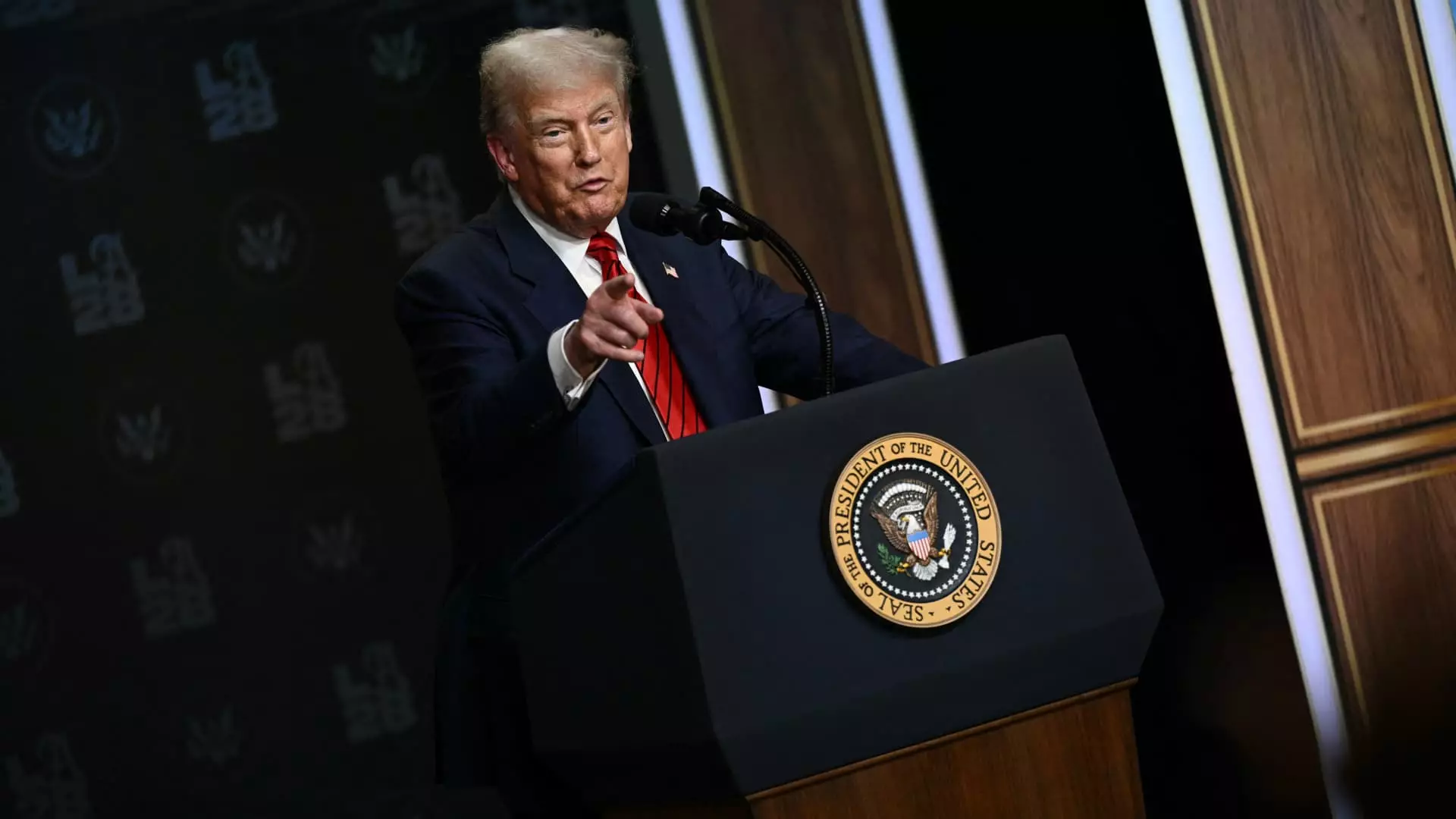The recent declarations surrounding the European Union’s pledge to invest a staggering $600 billion in the United States have ignited debates about the nature and reliability of high-profile political promises. On the surface, such an investment figure appears to signify a strong transatlantic partnership, yet beneath this veneer lies skepticism rooted in the structural limitations faced by the EU. The EU’s commitment, characterized by a broad and non-binding intent rather than enforceable action, exposes a fundamental flaw in the conventional narrative of powerful alliances. Promises of investment, especially of this magnitude, often serve political agendas more than actual economic plans, raising questions about whether this pledge is a meaningful step or merely a calculated political gesture.
While President Donald Trump celebrates the pledge as a “gift” that could dramatically bolster U.S. economic prospects, critics argue that without concrete mechanisms to compel investment, the notion remains an optimistic but hollow diplomatic gesture. The EU’s intricate bureaucracy and the decentralized nature of its member states mean that commitments made at the EU level are rarely binding on individual national companies. This structural reality critically undermines the credibility of such promises and reveals a pattern of political signaling over substantive action. Thus, while the headline figures look impressive, they mask the underlying reality of fragmented decision-making processes that could easily dilute or even nullify such commitments.
The Power Dynamics of Diplomatic Bluffing
The dynamics of this unique trade deal illustrate how international negotiations often hinge less on binding agreements and more on strategic leverage. For Trump, the EU’s pledge offers an advantageous position—if the investment materializes, it could serve as tangible proof of the alliance’s economic value, justifying tariff reductions and strengthening U.S. leverage. Conversely, should the EU fail to fulfill its promise, the threat of higher tariffs acts as a potent stick, wielding influence over the bloc’s internal and external politics. This transactional approach fosters a diplomatic environment driven less by mutual benefit and more by strategic bluffs, where each side uses promises as bargaining chips.
Critics must emphasize that the EU’s announced commitment is, at best, an approximation rooted in sectoral interest and private sector discretion. As the European Commission admits, the bulk of this potential investment resides on the shoulders of private companies, not government mandates. Without binding enforcement, the pledge resembles a political declaration designed more to appease domestic audiences than to produce concrete economic outcomes. Such narratives may serve short-term political capital and diplomatic positioning but fail to translate into reliable, long-term strategic gains. This transactional veneer underscores a broader truth: the global economy and political relationships are increasingly driven by uncertain promises, contingent on an array of fickle economic and political factors.
The Risks and Realities of Implementation
Even if the EU’s private sector intends to invest the claimed $600 billion, numerous challenges loom on the horizon. Economic experts warn that the timeline—targeting 2029—puts this promise squarely in the tail end of the current U.S. administration, creating an additional layer of uncertainty. Moreover, the current political climate, characterized by policy uncertainty and trade tensions, dampens investor confidence. Large-scale investments in the U.S. are inherently complex, requiring stable policy environments, market predictability, and long-term strategic confidence—all of which are in question.
Furthermore, the entanglement of geopolitical interests complicates this picture. Foreign investments are often influenced by broader policies, trade regulations, and international relations, leading many to question whether private industries will ultimately follow through on these commitments. Given the EU’s limited authority over its member firms and the unpredictable nature of global politics, the entire exercise becomes a fragile pipeline of potential, rather than a concrete plan. It exposes the vulnerability of relying on soft commitments in a world where power often resides in enforceable treaties and legal obligations rather than political promises.
Is Trump Operating from Strength or Exploiting Ambiguity?
From a strategic standpoint, Trump’s framing of this investment pledge as a win is both clever and transparent. It allows him to frame the EU’s failure to deliver as a threat, justifying the escalation of tariffs and other protectionist measures. The ambiguous nature of the pledge, combined with the lack of binding obligations, grants Trump leverage to manipulate the narrative, positioning himself as a defender of American interests whose patience is limited. This approach reveals a center-wing liberal perspective that recognizes the importance of diplomacy, mutual benefits, and enforceable agreements, but also understands how fragile and transactional modern geopolitics have become.
This power dynamic underscores an uncomfortable reality: diplomatic promises, especially those that are non-binding, often serve more as leverage than as commitments. The EU’s inability to enforce its investment promises reflects a broader reality—economic power often resides more in the ability to threaten and negotiate than in legally binding commitments. While such strategies might yield short-term wins, they risk eroding the very stability and trust necessary for genuine long-term cooperation, ultimately exposing the superficiality of political pledges in contemporary geopolitics.
In closing, theEU’s empty rhetoric surrounding the $600 billion pledge epitomizes the complexities and contradictions of international diplomacy. Whether this promise will translate into tangible economic growth remains uncertain, but what is clear is that it reveals a broader trend—one driven by strategic bluffs, short-term political gains, and an environment where genuine commitment often feels more like a negotiation tactic than a steadfast obligation.


Leave a Reply